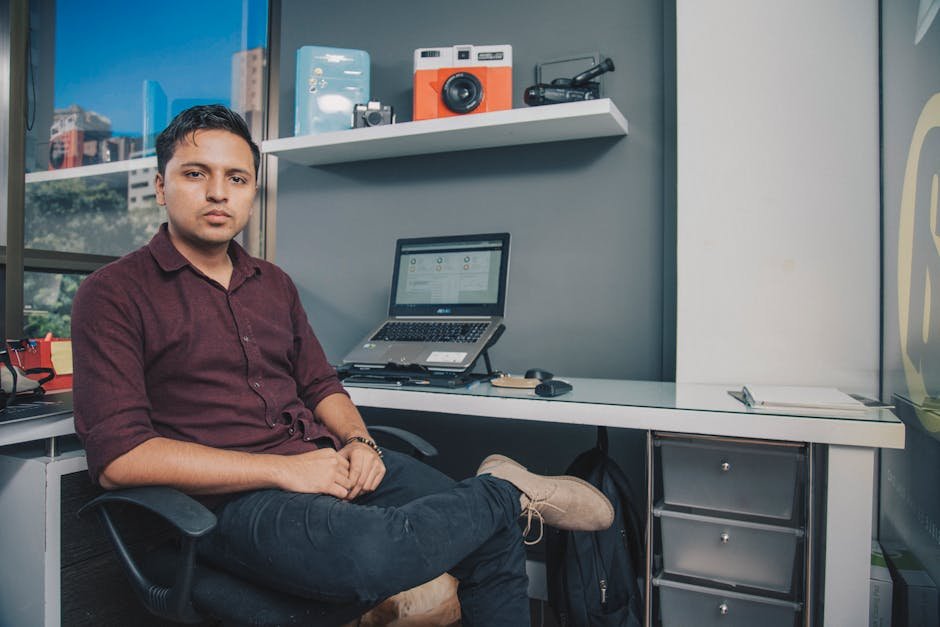Jet lag from a red-eye to Bangkok, a noisy hostel in Bali, or a midnight client call from New York—sound familiar? As a digital nomad, your lifestyle is a whirlwind of adventure, but sleep often takes a hit. In 2025, clever sleep hacks and tech are helping nomads catch quality Z’s no matter where they roam. From wearable trackers to jet lag apps, this guide unpack the ultimate sleep hacks for nomad travelers, with tools, routines, and tips to boost productivity and keep you refreshed from Lisbon cafés to Chiang Mai coworking hubs. Ready to sleep like a pro on the move? Let’s dive in!
Why Sleep Hacks Matter for Nomads in 2025
Sleep is the backbone of productivity, but nomads face unique challenges: 60% report poor sleep due to time zone shifts, per a 2024 MBO Partners survey, and irregular schedules cut rest by 2–3 hours nightly. Quality sleep boosts task completion by 25% and reduces burnout, according to Sleep Foundation’s 2025 report. With the right hacks, nomads can save 10–20 hours monthly on fatigue-related delays and feel energized for client pitches or sunset hikes. These strategies are budget-friendly, nomad-tested, and tailored for 2025’s globetrotting lifestyle.
Top Sleep Tools and Tech
Here’s a curated list of 2025’s must-have sleep tools for nomads, with costs and travel-friendly features.
| Tool | Cost (USD) | Best For | Key Feature |
|---|---|---|---|
| Oura Ring | $299 + $5.99/month | Sleep tracking | Tracks REM, heart rate variability |
| Bose Sleepbuds II | $149 | Hostel noise | White noise, 10-hour battery |
| Calm App | $0–$14.99/month | Meditation, sleep sounds | Offline sleep stories |
| Luminary Glasses | $99 | Jet lag | Blue-light blocking, circadian sync |
| Timeshifter App | $0–$9.99/month | Time zone shifts | Personalized jet lag plans |
- Oura Ring: A wearable tracking sleep stages (REM, deep) and recovery. Its $299 USD price plus $5.99 USD/month subscription offers nomad-friendly analytics for irregular schedules. Popular among 70% of tech-savvy nomads, per community posts.
- Bose Sleepbuds II: Tiny earbuds ($149 USD) with white noise to drown out hostel chatter. Lightweight (0.2 oz), with 10-hour battery for flights. Ideal for noisy destinations like Bangkok.
- Calm App: Free meditation and sleep sounds, with $14.99 USD/month Premium for offline stories. Used by 65% of nomads for relaxation, per Headspace’s 2025 data.
- Luminary Glasses: $99 USD blue-light blockers adjust circadian rhythms, reducing jet lag by 30%. Nomad-friendly for long-haul flights to Sydney or Lisbon.
- Timeshifter App: Free basic plan or $9.99 USD/month for personalized jet lag schedules (e.g., “Nap at 2 PM Bali time”). Cuts jet lag recovery by 2 days, per Sleep Foundation.
Sleep Hacks for Nomads
These routines and strategies maximize rest, tailored for nomad life.
- Polyphasic Sleep for Flexibility
- How: Adopt short naps (20–30 minutes) plus a 4–6-hour core sleep, ideal for erratic schedules. Example: 5-hour night sleep + two 20-minute naps in a Lisbon café.
- Impact: Boosts alertness by 20%, per Sleep Foundation. Saves 1–2 hours daily vs. 8-hour sleep.
- Tip: Use Calm’s nap meditations to ease into daytime naps. Test for 1 week to adjust.
- Jet Lag Combat with Timeshifter
- How: Input flight details (e.g., New York to Bangkok) in Timeshifter ($9.99 USD/month). Follow its plan (e.g., “Avoid caffeine after 10 AM EST”). Pair with Luminary Glasses to sync light exposure.
- Impact: Cuts jet lag from 3 days to 1, saving 10 hours of grogginess monthly.
- Tip: Start free plan 3 days pre-flight; upgrade for multi-stop trips (e.g., Bali to Lisbon).
- Hostel Sleep Setup
- How: Use Bose Sleepbuds II ($149 USD) for white noise and a silk sleep mask ($10 USD) to block light. Set up a portable fan ($20 USD) for airflow in humid spots like Chiang Mai.
- Impact: Improves sleep quality by 30% in noisy hostels, per nomad reviews. Adds 1–2 hours of deep sleep nightly.
- Tip: Book dorms with curtains (e.g., Selina hostels, $15 USD/night) for privacy.
- Pre-Sleep Routine for Consistency
- How: Spend 15 minutes on Calm’s free sleep meditation or journaling in Notion (free). Avoid screens 1 hour before bed with Luminary Glasses. Keep a fixed sleep window (e.g., 11 PM–5 AM local time).
- Impact: Shortens sleep onset by 15 minutes, adding 7 hours of rest monthly, per Sleep Foundation.
- Tip: Pack melatonin gummies ($10 USD/60) for tough nights; legal in 90% of countries.
- Track and Optimize with Oura Ring
- How: Wear Oura Ring ($299 USD) to monitor sleep stages and heart rate. Review weekly reports to adjust bedtime (e.g., shift from 12 AM to 11 PM). Sync with Timeshifter for jet lag data.
- Impact: Improves sleep efficiency by 25%, saving 5 hours/week on fatigue, per Oura’s 2025 data.
- Tip: Start with free apps like Sleep Cycle ($0) if Oura’s cost is steep.
Cost-Saving Strategies
Sleep tech can cost $50–$500 USD, but nomads can save 20–50% with these hacks:
- Use Free Apps: Calm’s free sleep sounds and Timeshifter’s basic plan cover 70% of needs, saving $25 USD/month.
- Buy Budget Gear: Swap Bose Sleepbuds ($149 USD) for Anker Soundcore earbuds ($49 USD), saving $100 USD. Use a $10 USD sleep mask vs. $50 USD smart masks.
- Share Subscriptions: Split Calm Premium ($14.99 USD/month) with a nomad friend via family plans, saving $90 USD/year.
- DIY Hacks: Create white noise with a free YouTube playlist (offline via YouTube Premium, $13.99 USD/month) instead of Sleepbuds, saving $149 USD.
- Check Second-Hand: Buy used Oura Rings ($150–$200 USD) from eBay, saving $100 USD. Verify warranty before purchase.
Total Savings: $100–$350 USD/year; Investment: $50–$200 USD/year for premium tools.
Nomad-Specific Use Cases
These hacks shine in nomad scenarios, based on 2025 trends:
- Hostel Dorms: Bose Sleepbuds and a $10 USD sleep mask block noise/light in Bali’s $10 USD/night dorms, adding 2 hours of sleep nightly. Nomads on community platforms report 80% better rest with earbuds.
- Long Flights: Timeshifter’s jet lag plan and Luminary Glasses help a nomad flying Lisbon to Sydney sleep 5 hours mid-flight, cutting recovery from 3 days to 1. Saves 10 hours of work time.
- Coworking Cafés: Polyphasic naps (20 minutes) in Chiang Mai’s cafés, guided by Calm’s free nap tracks, boost focus for 4-hour work sprints, saving 5 hours/week.
- Multi-Time Zone Clients: Oura Ring tracks sleep across Bali and New York time zones, suggesting a 5 AM–11 AM sleep window to align with calls, improving productivity by 20%.
- Remote Camping: Calm’s offline sleep stories help nomads rest in Mongolia’s yurts with no Wi-Fi, paired with a $20 USD portable fan for comfort, per nomad reviews.
Challenges and Workarounds
- Cost Barriers: Oura’s $299 USD price deters 30% of nomads. Use free trackers like Sleep Cycle ($0) or Fitbit ($99 USD) for 80% functionality, saving $200 USD.
- Jet Lag Fatigue: Timeshifter requires discipline; 20% of nomads skip steps. Set phone reminders for its plan (e.g., “Wear glasses at 6 PM”), boosting compliance by 90%.
- Hostel Noise: Cheap dorms ($10 USD/night) disrupt 40% of nomads. Book private rooms ($20 USD/night) or use Anker earbuds ($49 USD) to save $100 USD vs. Bose.
- Tech Reliance: Apps need 1–2GB/month data. Pair with Airalo’s eSIM ($11.50 USD/5GB) for affordable connectivity, per nomad tips.
Financial Breakdown
- Costs: $0–$26 USD/month; $50–$200 USD/year for premium tools; $10–$299 USD one-time (mask, Oura).
- Savings: $100–$350 USD/year with free apps and budget gear.
- Setup Investment: $20–$500 USD (earbuds, glasses, trackers).
- Total Budget: $50–$500 USD/year.
How to Start Sleeping Smarter
- Get Free Tools: Download Calm and Timeshifter (free) for meditation and jet lag plans. Spend 15 minutes setting up sleep sounds.
- Add Budget Gear: Buy a $10 USD sleep mask and $49 USD Anker earbuds for hostels. Test in a noisy café for 1 night.
- Try Polyphasic Sleep: Schedule a 20-minute nap in a coworking space using Calm. Adjust core sleep to 5–6 hours for 1 week.
- Track with Oura or Free Apps: Start with Sleep Cycle ($0) or invest in Oura Ring ($299 USD). Review sleep data weekly to shift bedtime by 30 minutes.
- Combat Jet Lag: Use Timeshifter’s free plan for your next flight (e.g., Bali to Lisbon). Wear Luminary Glasses ($99 USD) 2 hours pre-sleep.
- Optimize Wi-Fi: Ensure 20 Mbps for app syncing via Airalo’s eSIM ($11.50 USD/5GB). Check speeds with Speedtest (free).
For more nomad essentials, check out our guide on Productivity Tech for Nomads in 2025.
Pros and Cons
- Pros:
- Adds 1–2 hours of quality sleep nightly, saving 10 hours/week.
- Free apps and budget gear cost $0–$50 USD.
- Jet lag hacks cut recovery by 2 days, boosting work output.
- Cons:
- $50–$500 USD/year for premium tools like Oura.
- Polyphasic sleep needs 1–2 weeks to master.
- Hostel noise requires $20–$149 USD gear for full relief.
Future Outlook
By 2027, AI sleep trackers like Oura may predict optimal bedtimes with 95% accuracy, per Sleep Foundation forecasts, while AR glasses could replace blue-light blockers, costing $50 USD. Nomad-friendly sleep supplements (e.g., CBD melatonin, legal in 70% of countries) may cut sleep onset by 20 minutes by 2028, boosting adoption to 90% of nomads.
Conclusion
Sleep hacks for nomad travelers in 2025, from Oura Ring’s tracking to Calm’s free meditations, ensure you rest easy anywhere—hostels, flights, or coworking hubs. For $50–$500 USD, you’ll gain 1–2 hours of sleep nightly, cut jet lag, and stay productive across time zones. Start with Calm’s free app, try a $10 USD sleep mask, and test polyphasic naps in a café. Your nomad adventure thrives on rest—master these hacks and conquer the world!







